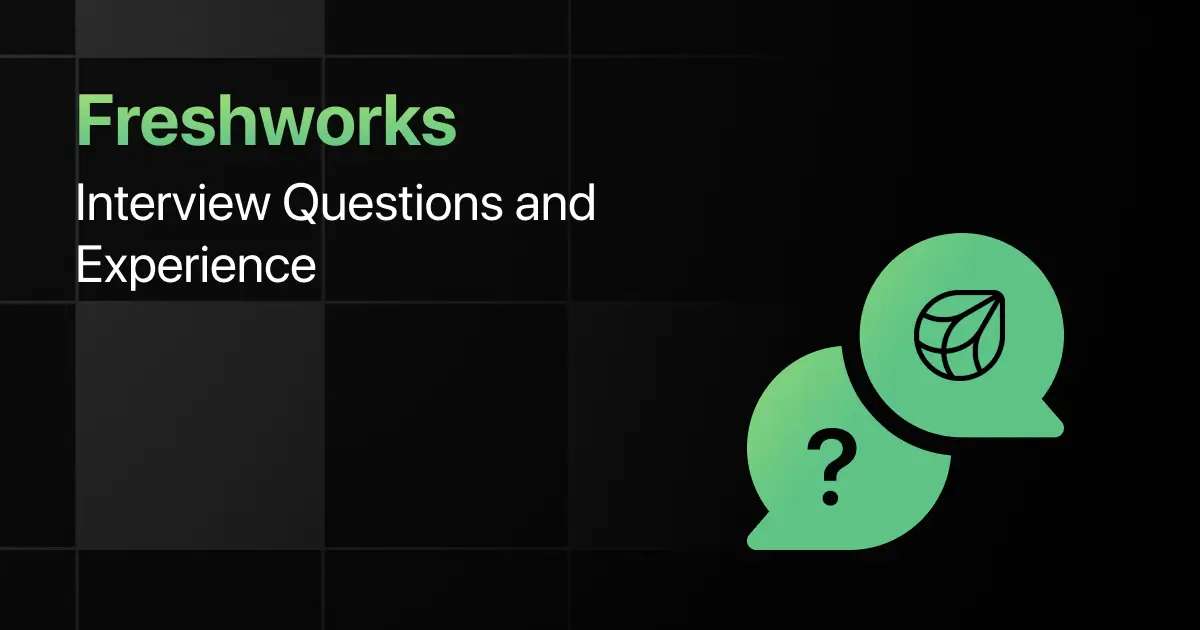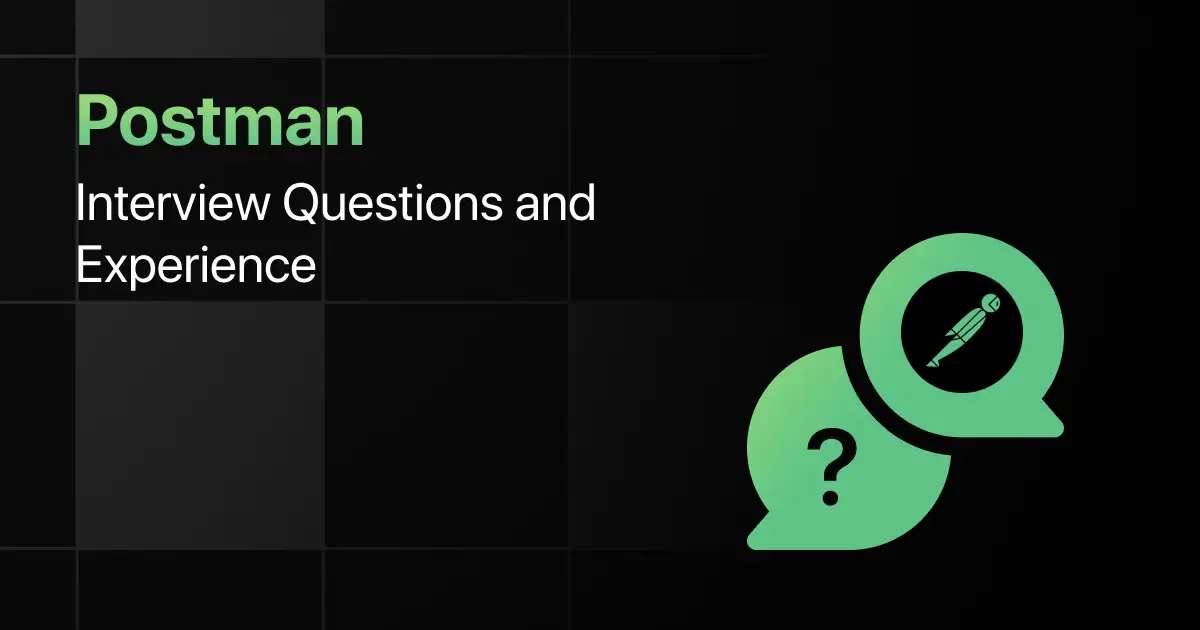Top Azure Interview Questions for Freshers

Are you preparing for your first Azure interview and wondering what questions you might face?
Understanding the key Azure interview questions for freshers can give you more clarity.
With this guide, you’ll be well-prepared to tackle these Azure interview questions and answers for freshers and make a strong impression in your interview.
Practice Azure Interview Questions and Answers
Below are the top 50 Azure interview questions for freshers with answers:
1. What is Azure, and what are its key features?
Answer:
Azure is a cloud computing platform and service offered by Microsoft that provides a range of cloud services, including computing, analytics, storage, and networking.
Key features include scalability, high availability, security, and support for various programming languages and frameworks.
2. Describe the difference between Azure IaaS, PaaS, and SaaS.
Answer:
- IaaS (Infrastructure as a Service): Provides virtualized computing resources over the internet. Users manage the operating system and applications.
- PaaS (Platform as a Service): Offers a platform allowing developers to build, deploy, and manage applications without worrying about the underlying infrastructure.
- SaaS (Software as a Service): Delivers software applications over the internet on a subscription basis, managed by a service provider.
3. What is Azure Active Directory, and how does it differ from on-premises Active Directory?
Answer:
Azure Active Directory (Azure AD) is a cloud-based identity and access management service.
Unlike on-premises Active Directory, which manages network resources, Azure AD is designed for web-based applications and provides features like single sign-on (SSO), multi-factor authentication, and identity protection.
4. Explain the concept of Azure Resource Manager (ARM).
Answer:
Azure Resource Manager (ARM) is the deployment and management service for Azure.
It provides a unified management layer that allows users to create, update, and delete resources in their Azure account using a resource group model, making it easier to manage dependencies and permissions.
5. What are Azure Regions and Availability Zones?
Answer:
- Azure Regions: Geographically distinct locations that host Azure data centers, providing redundancy and data residency options.
- Availability Zones: Physically separate data centers within a region, designed to ensure high availability and fault tolerance by providing isolated power, cooling, and networking.
6. How can you secure an Azure subscription?
Answer:
Securing an Azure subscription involves implementing several practices, such as using role-based access control (RBAC), setting up multi-factor authentication (MFA), applying network security groups (NSGs), and regularly reviewing audit logs and security policies.
7. What is Azure Blob Storage, and what are its use cases?
Answer:
Azure Blob Storage is a scalable object storage service for unstructured data.
Use cases include storing large amounts of text or binary data, backups, serving images or documents directly to a browser, and storing data for analytics and big data applications.
8. Explain the difference between Azure Functions and Azure Logic Apps.
Answer:
- Azure Functions: A serverless compute service that runs code in response to events, allowing developers to execute code without managing servers.
- Azure Logic Apps: A cloud-based service that automates workflows and business processes by integrating various services and applications without writing code.
9. What are Azure Virtual Networks (VNet) and their components?
Answer:
Azure Virtual Networks (VNet) enable the creation of private networks in Azure, allowing resources to securely communicate.
Components include subnets, IP addresses, route tables, and network security groups (NSGs) for managing traffic flow.
10. Describe Azure DevOps and its key services.
Answer:
Azure DevOps is a set of development tools for planning, developing, and deploying software.
Key services include Azure Boards (for project management), Azure Repos (for source control), Azure Pipelines (for CI/CD), Azure Test Plans (for testing), and Azure Artifacts (for package management).
11. How do you monitor and troubleshoot Azure resources?
Answer:
Monitoring and troubleshooting Azure resources can be achieved using Azure Monitor, which provides insights into performance and health.
Tools like Azure Log Analytics, Application Insights, and Azure Security Center can help analyze logs, monitor application performance, and identify security vulnerabilities.
12. What is Azure Kubernetes Service (AKS), and how does it simplify container management?
Answer:
Azure Kubernetes Service (AKS) is a managed container orchestration service that simplifies deploying, managing, and scaling containerized applications using Kubernetes.
It handles the complexities of Kubernetes management, such as scaling, upgrades, and security, allowing developers to focus on building applications.
13. Explain the concept of Azure Logic Apps and when to use them.
Answer:
Azure Logic Apps is a cloud service that automates workflows and integrates apps, data, and services.
It is best used for automating business processes, orchestrating data movement, or integrating various services without writing code.
14. What is the Azure Marketplace, and how does it benefit users?
Answer:
The Azure Marketplace is an online store that offers applications, services, and solutions built on Azure.
It benefits users by providing a wide range of ready-to-use solutions that can be deployed easily, saving time and reducing development effort.
15. How can you implement a multi-tier architecture in Azure?
Answer:
Implementing a multi-tier architecture in Azure can be done by using services like Azure App Service for the web tier, Azure SQL Database for the data tier, and Azure Virtual Machines for any custom applications.
Networking can be managed through VNets and NSGs to ensure secure communication between tiers.
16. Describe Azure Functions and their triggers.
Answer:
Azure Functions are serverless compute resources that run code in response to events.
Triggers can be HTTP requests, timers, Azure Blob Storage changes, Azure Queue Storage messages, and various Azure services or external sources, enabling event-driven architectures.
17. What is Azure Traffic Manager, and how does it work?
Answer:
Azure Traffic Manager is a DNS-based traffic load balancer that enables the distribution of traffic to Azure services globally.
It routes user requests based on policies, such as performance, geographic location, or priority, ensuring high availability and improved user experiences.
18. Explain the purpose of Azure Security Center.
Answer:
Azure Security Center is a unified security management system that provides advanced threat protection across hybrid cloud workloads.
It helps identify vulnerabilities, enforce security policies, and provide recommendations to enhance security postures.
19. What is Azure Cosmos DB, and what are its advantages?
Answer:
Azure Cosmos DB is a globally distributed, multi-model database service designed for low latency and high availability.
Advantages include automatic scaling, support for various data models (document, key-value, graph), and comprehensive SLAs for throughput, consistency, and availability.
20. How do you implement Azure Policy, and why is it important?
Answer:
Azure Policy helps enforce organizational standards and assess compliance at scale.
Policies can be implemented through Azure Portal, Azure CLI, or ARM templates, ensuring resources comply with defined rules, such as allowed resource types, regions, or tagging.
21. What is Azure Site Recovery (ASR), and how does it work?
Answer:
Azure Site Recovery (ASR) is a disaster recovery service that helps ensure business continuity by replicating workloads to Azure.
It automates the recovery process, allowing organizations to failover applications to Azure in case of an outage and failback when the primary site is restored.
22. Describe how Azure Automation can improve operational efficiency.
Answer:
Azure Automation provides a way to automate repetitive tasks and processes through runbooks, which are scripts that can be triggered based on schedules or events.
It improves operational efficiency by reducing manual intervention, minimizing errors, and allowing teams to focus on strategic initiatives.
23. What is Azure AD Connect, and why is it used?
Answer:
Azure AD Connect is a tool that connects on-premises directories to Azure Active Directory, enabling a common identity for users.
It is used to synchronize user accounts, groups, and credentials, allowing seamless single sign-on (SSO) experiences for users.
24. How do you set up virtual private networks (VPNs) in Azure?
Answer:
Setting up VPNs in Azure involves creating a virtual network gateway, defining the VPN connection (site-to-site, point-to-site), and configuring the necessary settings for authentication and routing.
Azure supports various VPN types, allowing secure connections to on-premises networks or remote users.
25. What is Azure Service Fabric, and when would you use it?
Answer:
Azure Service Fabric is a distributed systems platform for building and managing microservices applications. It provides features for service discovery, load balancing, and scaling.
It is suitable for applications that require high availability, low latency, and robust orchestration.
26. Explain the role of Azure Monitor in cloud management.
Answer:
Azure Monitor provides comprehensive monitoring and diagnostics for applications and resources in Azure.
It collects metrics and logs, analyzes performance, and provides insights to optimize resource usage and improve reliability.
27. How do you handle Azure storage accounts and their types?
Answer:
Azure storage accounts provide a unique namespace for storing data in Azure.
There are different types of storage accounts, including General Purpose v2 (for blobs, files, queues, and tables), Blob Storage (for unstructured data), and File Storage (for SMB shares).
28. What is Azure SQL Database, and what are its benefits?
Answer:
Azure SQL Database is a fully managed relational database service based on the SQL Server engine.
Benefits include automatic backups, scaling, high availability, and built-in intelligence for performance tuning, reducing the operational overhead of managing databases.
29. How do you implement security best practices in Azure?
Answer:
Implementing security best practices in Azure involves using Azure Security Center for assessments, applying RBAC for permissions, enabling MFA for user accounts, utilizing network security groups (NSGs), encrypting sensitive data, and regularly monitoring logs and alerts for unusual activities.
30. What are Azure Logic Apps, and how can they be used in integration scenarios?
Answer:
Azure Logic Apps is a cloud service that helps automate workflows between applications and services.
It can be used to integrate various systems, handle data movements, and automate business processes through connectors and triggers without the need for custom code.
31. Describe how Azure Functions can help in serverless computing.
Answer:
Azure Functions provides a serverless computing model where users can run code in response to events without provisioning servers.
It allows developers to focus on writing code, automatically scaling based on demand and only charging for the compute time consumed.
32. What is Azure Data Lake, and how does it differ from Azure Blob Storage?
Answer:
Azure Data Lake is a scalable storage service designed specifically for big data analytics. It allows users to store vast amounts of structured and unstructured data.
The key difference from Azure Blob Storage is its hierarchical namespace, which optimizes data access and management for analytics workloads.
33. How can Azure Redis Cache improve application performance?
Answer:
Azure Redis Cache is an in-memory data store that speeds up application performance by caching frequently accessed data.
By reducing the load on databases and improving response times, it enhances user experiences and application scalability.
34. What are Azure Load Balancers, and how do they work?
Answer:
Azure Load Balancers distribute network traffic across multiple servers to ensure high availability and reliability.
They operate at both Layer 4 (TCP, UDP) and Layer 7 (HTTP, HTTPS), routing incoming requests based on health probes and load-balancing algorithms.
35. Explain Azure API Management and its benefits.
Answer:
Azure API Management is a service that helps organizations publish, secure, and analyze APIs.
Benefits include centralized API management, monitoring usage, enforcing security policies, and providing a developer portal for easier integration and collaboration with developers.
36. What is Azure Cognitive Services, and what can it do?
Answer:
Azure Cognitive Services provides a set of APIs and services that enable developers to integrate AI capabilities into applications.
It includes functionalities for vision, speech, language understanding, and decision-making, helping create intelligent applications that can see, hear, and understand user inputs.
37. Describe how Azure Backup works and its importance.
Answer:
Azure Backup is a cloud-based backup solution that protects data from accidental loss or corruption.
It allows users to back up on-premises and Azure workloads, providing automated backups, data recovery options, and compliance with regulatory requirements.
38. How do you implement Azure DevTest Labs, and what are its advantages?
Answer:
Azure DevTest Labs provides a cloud-based environment for developers to quickly create and manage virtual machines for testing.
Advantages include cost management, environment provisioning, and automated deployment of test environments, enabling faster development cycles.
39. What is Azure Data Factory, and when would you use it?
Answer:
Azure Data Factory is a cloud-based data integration service that allows users to create data-driven workflows for moving and transforming data.
It is used for ETL (Extract, Transform, Load) processes, integrating data from various sources, and preparing it for analytics.
40. How can you use Azure Policy for compliance management?
Answer:
Azure Policy helps enforce compliance with organizational standards by defining policies that evaluate resources for adherence to rules.
It enables organizations to automatically assess and remediate non-compliant resources, ensuring consistent governance across Azure environments.
41. What is Azure Sentinel, and how does it enhance security operations?
Answer:
Azure Sentinel is a cloud-native security information and event management (SIEM) service that uses AI to analyze security data from across the enterprise.
It enhances security operations by providing real-time insights, automating incident response, and enabling proactive threat hunting.
42. Describe the concept of Azure Blueprints.
Answer:
Azure Blueprints is a service that enables organizations to define a repeatable set of Azure resources, policies, and compliance standards.
It helps streamline the deployment and management of environments, ensuring consistency across projects and adhering to regulatory requirements.
43. How do you implement Azure Firewall and its key features?
Answer:
Azure Firewall is a managed, cloud-based network security service that protects Azure Virtual Network resources.
Key features include stateful packet inspection, built-in high availability, scalability, and integration with Azure Monitor for logging and analytics.
44. What are Azure Service Bus and its use cases?
Answer:
Azure Service Bus is a messaging service that enables communication between decoupled applications and services.
Use cases include message queuing, publish/subscribe scenarios, and integrating different systems in microservices architectures.
45. Explain the role of Azure Functions in event-driven architecture.
Answer:
Azure Functions play a critical role in event-driven architecture by allowing applications to respond to events (like file uploads, database changes, or HTTP requests) dynamically.
This enables efficient processing of tasks without constant resource allocation, reducing costs and improving scalability.
46. What is Azure Key Vault, and why is it important?
Answer:
Azure Key Vault is a cloud service that securely stores and manages secrets, keys, and certificates.
It is important for protecting sensitive data, providing secure access to applications, and simplifying the management of cryptographic keys and secrets.
47. How can you optimize costs in Azure?
Answer:
Cost optimization in Azure can be achieved by using Azure Cost Management tools, rightsizing resources, implementing auto-scaling, leveraging reserved instances, and regularly reviewing spending patterns to eliminate unnecessary resources or services.
48. What is the Azure App Service, and what types of applications can it host?
Answer:
Azure App Service is a fully managed platform for building, deploying, and scaling web apps and APIs.
It can host various application types, including web applications, RESTful APIs, mobile backends, and serverless apps, with built-in support for multiple programming languages.
49. How does Azure Monitor integrate with other Azure services?
Answer:
Azure Monitor integrates with other Azure services by collecting and analyzing telemetry data from Azure resources, providing insights into performance and health.
It works with services like Azure Security Center, Azure Sentinel, and Application Insights to deliver comprehensive monitoring and security capabilities.
50. What are the best practices for securing Azure applications?
Answer:
Best practices for securing Azure applications include implementing strong authentication and authorization measures, using secure coding practices, and applying network security controls.
Final Words
Getting ready for an interview can feel overwhelming, but going through these Azure fresher interview questions can help you feel more confident.
With the right preparation, you’ll ace your Azure interview but don’t forget to practice essential services like Azure Virtual Machines, Azure App Services, Azure Storage, and Azure Networking-related interview questions too.
Explore More Azure Resources
Explore More Interview Questions
- Python
- Java
- SQL
- React
- JavaScript
- C Programming
- HTML
- CSS
- Angular
- C++
- Spring Boot
- Node JS
- Excel
- C#
- DBMS
- PHP
- Linux
- Operating System
- MySQL
- Spring
- Flutter
- MongoDB
- Django
- React Native
- jQuery
- Bootstrap
- Embedded C
- DSA
- R Programming
- Hadoop
- .NET
- Power BI
- ASP.NET
- ASP.NET MVC
- Android
- Tableau
- MVC
- WordPress
- TypeScript
- Spark
- Kotlin
- Swift
- Golang
- Shell Scripting
- iOS
- Spring MVC
- Next JS
- AWS
- Kubernetes
- Docker
- Cyber Security
FAQs
Common Azure interview questions for freshers often revolve around cloud concepts like IaaS, PaaS, and SaaS, Azure virtual machines, storage solutions, networking (VNet), and Azure Active Directory.
Freshers should focus on Azure services such as Azure VMs, App Services, Storage Accounts, Azure DevOps, and Azure Identity services like Azure AD. Understanding cost management and security practices are also key topics.
Hands-on practice using Azure’s free tier to deploy and manage resources is essential.
Familiarity with the Azure portal, CLI, and ARM templates, along with studying case studies and certification material, will help freshers prepare effectively.
When solving coding questions, break the task into small steps, leveraging Azure’s built-in tools and documentation.
Use Azure’s official SDKs and libraries to simplify coding tasks, ensuring you explain your logic clearly while using resources efficiently.
Yes, freshers should prepare advanced topics like Azure Kubernetes Service (AKS), DevOps pipelines, and serverless computing (Azure Functions).
Related Posts


Paytm Interview Questions and Experience
Preparing for a Paytm interview requires a clear understanding of the company’s hiring process, the type of questions asked, and …
Warning: Undefined variable $post_id in /var/www/wordpress/wp-content/themes/placementpreparation/template-parts/popup-zenlite.php on line 1050








